Pipeline safety regimes in Canada
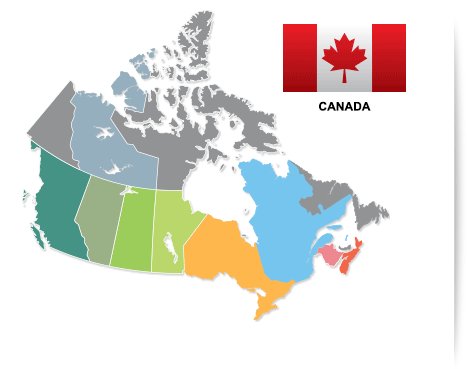
Canada overview

98 pipeline companies regulated by the Canada Energy Regulator

73,000 km of pipelines regulated by the Canada Energy Regulator

$106 billion/year - the value of energy products transported via pipeline (2015)

1,339 million barrels/year of oil transported via pipeline

6,200 billion cubic feet/year of natural gas transported via pipeline
Federal pipeline regulatory regime
With 825,000 kilometres of transmission, gathering and distribution pipelines in Canada, most provinces have significant pipeline infrastructure. Close to 100 pipeline companies are federally-regulated and operate approximately 73,000 kilometres of pipelines in Canada.
Federal pipeline regulator
The Canada Energy Regulator (CER, formerly the National Energy Board) is an independent federal agency that regulates cross-border pipelines in Canada. The role of the CER is to make sure pipeline companies meet strict requirements to keep Canadians and the environment safe.
Prevention
The Canadian Energy Regulator Act is the legal framework that ensures that federally-regulated pipelines are designed, constructed, operated and abandoned in a manner that is safe for the public and the environment. Regulations made under this Act require that companies design safety management, environmental protection, emergency management, third-party crossing, public awareness, and integrity management programs, which are reviewed by the CER.
Pipelines and equipment regulated by the CER must meet Canadian Standards Association specifications. The CSA Standard Z662 — Oil and Gas Pipeline Systems sets out the technical standards for the design, construction, operation, maintenance, and decommissioning of Canada’s oil and gas pipelines.
The CER is also responsible for conducting environmental assessments for the projects it regulates in accordance with the Impact Assessment Act.
The CER requires pipeline companies to have integrity management programs in place to ensure the physical condition of the pipeline is monitored and maintained so that releases do not occur.
The CER conducts ongoing pipeline monitoring, inspections, and site visits to confirm compliance to regulatory requirements. Where necessary, the CER can issue mandatory compliance orders or use other appropriate tools to enforce these requirements.
The CER also tracks the safety record of pipelines under its jurisdiction to demonstrate continual improvement, and posts compliance and enforcement actions online.
The Pipeline Safety Act came into force on June 19, 2016. The Act enshrines the polluter-pays principle into law, clarifies audit and inspection powers of the CER, and ensures companies remain responsible for their abandoned pipelines. The Government of Canada has also sought the CER’s guidance, through a study and report, on the use of best available technologies in federally regulated pipeline projects. This includes materials, construction methods, emergency response techniques, and environmental considerations.
Preparedness and response
The CER requires companies to have an emergency management program that anticipates, prevents, manages and mitigates conditions during an emergency that could adversely affect property, the environment, or the safety of workers or the public.
Companies must also develop, review and update emergency procedures manuals, and submit these manuals to the CER. The regulator requires key emergency response information to be made public and has ordered all pipeline companies to publish their emergency procedures manuals on their websites by the end of September 2016.
The CER must be notified immediately of any release that occurs from federally-regulated pipelines. In an emergency situation, the CER’s top priority is to make sure that people are safe and secure, and that property and the environment are protected.
Pipeline companies must have incident first-responders and continually educate all first-responders, such as fire departments and police, on procedures to be followed in the event of an emergency.
When an emergency occurs, the CER:
- Monitors, observes, and assesses the company’s emergency response
- Investigates the incident, sometimes in cooperation with the Transportation Safety Board (TSB). The mandate of the TSB is to identify and publicly report the causes and contributing factors of incidents, and to make recommendations to eliminate or reduce any identified safety issues.
- Initiates enforcement actions
- Oversees remediation actions
- Coordinates post-incident follow-up
- Updates its online incident map
The Pipeline Safety Act requires companies to demonstrate that they have financial resources to match at a minimum their level of absolute liability. A portion of these resources will need to be readily accessible to help ensure rapid incident response.
Liability and compensation
Pipeline companies regulated by the CER are liable for all remediation costs if at fault or negligent. Regardless of fault or negligence, companies are required to address and mitigate pipeline incidents, and the CER can issue orders to this effect.
Companies may be subjected to administrative penalties or other enforcement actions if they do not comply with regulatory requirements
For example, companies can be prosecuted for certain violations of the Canadian Energy Regulator Act, with fines ranging from $100,000 to $1 million and imprisonment from one to five years. The CER can also impose Administrative Monetary Penalties to individuals or companies for infractions, ranging from $25,000 to $100,000 per day per violation.
The Pipeline Safety Act enshrines in law the “polluter pays” principle, under which companies have unlimited liability when at fault or negligent; introduces absolute liability for all CER-regulated companies, meaning that companies will be liable for all costs and damages up to set limits ($1 billion for companies operating major oil pipelines) without proof of fault or negligence; provides governments the ability to pursue pipeline operators for the costs of environmental damages; authorizes the CER to order reimbursement of costs and expenses incurred by others in taking actions related to an incident; and, allows for the CER to take control of incident response in exceptional circumstances, if a company operating a pipeline is unwilling or unable to shoulder its responsibilities. In such a circumstance, costs are to be recovered fully from industry.
Provinces and territories
- Northwest Territories
- British Columbia
- Alberta
- Saskatchewan
- Manitoba
- Ontario
- Quebec
- New Brunswick
- Nova Scotia
Northwest Territories
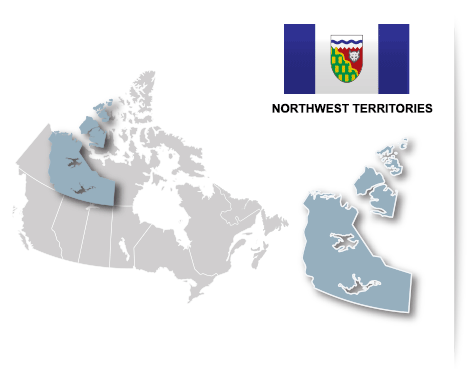

955 km of pipelines regulated by the Canada Energy Regulator
Office of the Regulator of Oil and Gas Operations
The Office of the Regulator of Oil and Gas Operations (OROGO) regulates oil and gas operations in the Northwest Territories, outside federal areas and the Inuvialuit Settlement Region (ISR). OROGO’s responsibilities include application reviews, seismic and drilling operations regulation, pipeline and well regulation, inspection and compliance, and emergency response and investigation.
As of April 1, 2014, the Government of the Northwest Territories became responsible for management of onshore oil and gas development and regulation in the Northwest Territories.
The Canada Energy Regulator (CER, formerly the National Energy Board) will remain the regulator for oil and gas developments that straddle the onshore/offshore and in the ISR for the next 20 years.
The following pipelines in the Northwest Territories are regulated by the CER:
- Enbridge pipeline, Norman Wells to Zama, AB (870 km, 12” diameter oil pipeline)
- IKHIL pipeline, Inuvik (50 km, 6” diameter gas pipeline)
- Cameron Hills pipeline to Bistcho, AB (15 km, 12” diameter pipeline)
- Spectra pipeline, Fort Liard to BC (20 km, 20” diameter pipeline)
British Columbia
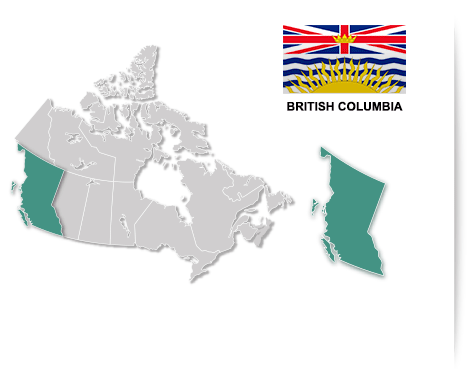

118 pipeline companies regulated

42,681 km of provincial pipelines

7.3 million barrels/year of crude oil transported via pipeline (2015)

1,748 billion cubic feet/year of natural gas transported via pipeline (raw gas, 2015)
Provincial pipeline regulator
British Columbia Oil and Gas Commission
The British Columbia Oil and Gas Commission (Commission) is an independent, single-window regulatory agency with responsibilities for overseeing oil and gas operations in British Columbia, including pipeline transportation.
Prevention
The Commission has jurisdiction over most pipelines within provincial boundaries with over 100 pounds per square inch pressure (psi). The Commission reviews most pipeline and facility applications for projects on provincial and private lands. The rules pertaining to pipelines in British Columbia are defined in the provincial Oil and Gas Activities Act, Regulation, and applicable Canadian Standards Association standards.
The Commission requires companies to periodically test pipelines to ensure compliance with regulatory standards. It also requires companies to carry out integrity management programs to ensure pipelines are fit for service at all times.
The Commission conducts pipeline construction inspections and employs a risk-based model for inspecting operational pipelines. Company integrity management programs are audited by the Commission. The province continues to increase capacity for inspections and audits via funding from industry and is developing a Compliance Management System to ensure lifecycle regulatory oversight for pipelines.
Quarterly and annual compliance reports are provided on the Commission's website. The Commission also reports annually on releases and spills in the province as part of their annual Pipeline Performance Summary.
The Commission and the Ministry of Environment have enforcement authorities, which include a host of options based on the significance and severity of the contravention (e.g. administrative penalties, orders, tickets, warnings). Penalties for non-compliance can be up to $1.5 million and/or imprisonment upon criminal prosecution.
Preparedness and response
The Commission requires companies to have an emergency management program that anticipates, prevents, manages, and mitigates conditions during an emergency that could adversely affect property, the environment, or safety of workers or the public.
Emergency management programs must include wildlife and natural resource impact assessments, a mitigation and remediation plan, the identification of emergency response equipment and personnel, and the organization of annual exercises to evaluate incident response and emergency management systems.
The Commission ensures that companies respond effectively to incidents and that the interests of British Columbians are protected through a 24/7, 365 days per year, incident response program.
When a pipeline incident occurs, companies must report it immediately to Emergency Management BC and the Commission, and must take steps for the protection of safety and the environment as part of required emergency response programs. The Commission is actively involved in the management of incidents, and will issue enforcement orders if a company's response is deemed inadequate.
After the immediate response, the Commission (in cooperation with the Ministry of Environment) ensures the environmental effects of any product release are contained, mitigated, and appropriately remediated. The Commission also coordinates post-incident follow-up including reporting, investigation, best practice sharing, and communications.
The Commission is committed to full public transparency. Its interactive Incident Map shows where pipeline incidents have occurred since 2000.
Liability and compensation
In British Columbia, unlimited liability exists for pipeline companies found to be at fault or negligent in the case of a pipeline incident.
The Commission maintains a Liability Management Rating Program to ensure operators in British Columbia have sufficient financial means to remediate a site used for an oil and gas activity. Operators with insufficient assets are required to submit a security deposit to the Commission to cover their liabilities.
There are rare occurrences where a permit holder for an existing well, facility or pipeline is insolvent or cannot be identified. These sites are classified as orphan sites and remediated using the industry-funded Orphan Site Reclamation Fund.
Alberta
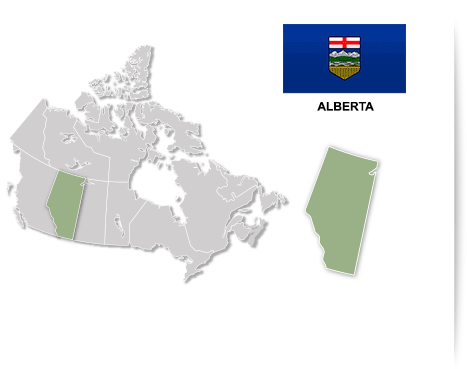

415,152 km of provincial pipelines

8,267 km of large-diameter provincial transmission lines

1,022 million barrels/year of crude oil transported via pipeline (2013) *majority transported via pipeline but some by rail

4,200 billion cubic feet/year of natural gas transported via pipeline (2013)

1,435 pipeline inspections and investigations (2012)
Provincial pipeline regulator
The Alberta Energy Regulator (AER) is a regulatory body with a mandate to provide for the efficient, safe, orderly, and environmentally responsible development of Alberta’s energy resources.
Prevention
The AER ensures that the design, construction, operation, and maintenance - including discontinuation and abandonment - of regulated pipelines comply with Alberta’s Pipeline Act (PDF 348 KB), Pipeline Regulation, and applicable Canadian Standards Association (CSA) standards.
The AER’s pipeline-inspection program considers pipeline fluid characteristics, location, line size, failure history and the company’s compliance history. Pipelines with greater potential risks are given a higher inspection priority.
Pipeline operators in Alberta are required to develop and implement integrity management programs to identify and mitigate risks associated with a particular pipeline, including corrosion mitigation and monitoring as well as other risk factors. Licensees must re-evaluate corrosion potential annually and keep records of the actions taken to ensure compliance with all regulations.
The AER’s Compliance and Enforcement Program ensures operator compliance through its education, prevention, and enforcement activities. The regulator has a range of enforcement tools including administrative penalties (a monetary fine), restricting operations, and shutting down facilities. The AER may also prosecute a significant noncompliance under both the energy resource enactments and the specified enactments.
The AER employs field inspectors based in field centres throughout the province. They inspect construction, operation, and abandonment operations at oil, gas, and oil sands facilities (including pipelines, compressors, and processing plants).
Preparedness and response
Operators in Alberta have a responsibility to ensure that they are fully prepared and capable of responding to any level of emergency. To fulfill this responsibility, all license holders are required to have an emergency management program and to have extensive maintenance and repair programs, leak detection systems, and trained emergency response personnel. When pipelines pass through or near populated areas, roads, railways, or water bodies, regulatory requirements intensify.
Alberta is unique in North America in that it requires all pipeline failures, including test failures, or any contact or damage to a pipeline to be reported, regardless of the size of the spill, area affected, status of the pipeline, or type of fluid released. The AER’s public incident reporting helps to ensure Albertans are informed about energy incidents in the province.
The AER conducts comprehensive incident investigations after serious incidents occur to determine the cause of a pipeline failure and what can be done to prevent a similar situation in the future.
Liability and compensation
The AER works collaboratively with government and industry stakeholders to develop and implement appropriate liability management programs for all energy sectors regulated by the AER.
Alberta holds all licensees responsible for spill clean-up and remediation regardless of fault. The AER has an absolute no-fault liability which requires the licensee pay for all costs associated with emergency response, clean-up, and restoration.
Alberta’s Orphan Fund pays for the abandonment and reclamation of wells, facilities, and pipelines if a licensee or working interest participant becomes defunct. The Orphan Fund is fully funded by industry.
Saskatchewan
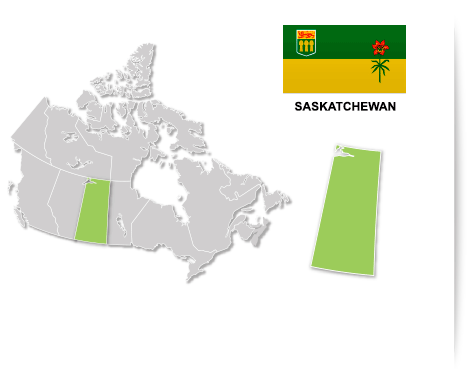

75 transmission pipeline companies regulated

102,400 km of provincial pipelines and flowlines

82.5% of crude oil shipped by pipeline (2013)

66 inspections of licensed pipelines (2013)
Provincial pipeline regulator
Saskatchewan’s Ministry of the Economy (Ministry) advances and regulates responsible resource development in the province.
Transmission pipelines are licensed in accordance with The Pipelines Act, 1998 and the associated regulations. Although Saskatchewan flowlines are not licensed, The Pipeline Regulations, 2000 requires that they must be designed, constructed, operated, and maintained in accordance with applicable Canadian Standards Association standards for oil and gas pipeline systems.
The Ministry is reviewing the merits of the pipeline legislation and considering licensing flowlines.
Prevention
The Ministry ensures that the design, construction, testing, operation, maintenance and repair of pipelines comply with applicable Canadian Standards Association specifications.
Pipeline licensees in Saskatchewan are required to develop and implement pipeline integrity and safety management programs to identify, manage, monitor, and address any potential hazard associated with each individual pipeline.
The Ministry conducts proactive and random inspections and audits on pipeline construction, pressure tests, and operations.
The regulator has a range of enforcement options to ensure compliance, ranging from administrative penalties to monetary penalties, including warning letters, suspension or cancellation of a licence, and fines.
Preparedness and response
Saskatchewan requires that every operator immediately notify the Ministry of any spills, fires, or other failures, except where the volume of oil, salt water or other product released is less than 1.6 cubic metres and is contained on property that the operator owns or leases.
All pipeline operators are required to have and maintain up-to-date emergency response plans, accessible to all operating and maintenance personnel, which set out the actions to be taken and the agencies and individuals to be contacted in the event of a rupture, break, leak or fire.
In the case of an incident, pipeline operators are required to clean up and remediate the site. The Ministry conducts field inspections, requires written reports from the operator, and closely monitors post-incident remediation. Six oil spill co-ops in Saskatchewan also provide immediate emergency response capabilities to operators, including specialized equipment, infrastructure, and personnel, should a release occur.
Liability and compensation
Saskatchewan holds all licensees responsible for spill clean-up and remediation regardless of fault. Should an incident occur, the operator is required to take immediate action according to the established emergency response plan.
Saskatchewan’s Oil and Gas Orphan Fund was established to address abandonment, decommissioning, and clean-up of wells and facilities where the obligations of those responsible are not being met. The Oil and Gas Orphan Fund is fully funded by licensees in the program through fees and levies. No funds are available for licensed pipelines.
Manitoba
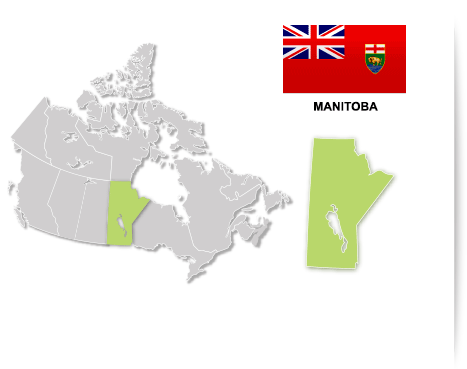

6 pipeline companies regulated

564 km of provincial pipelines

$927 million/year - value of hydrocarbons transported via pipeline

17.6 million barrels/year of crude oil transported via pipeline
Provincial pipeline regulator
Manitoba Public Utilities Board
The Manitoba Public Utilities Board (Board) supervises the construction and operation of natural gas and propane pipelines, and ensures that gas and propane are safely distributed to Manitoba consumers.
Prevention
The Board ensures that pipeline companies comply with the province’s Oil and Gas Act and associated Regulations, including applicable Canadian Standards Association standards.
Pipeline companies require an environmental licence before construction. The application process is very involved in determining the pipeline route, and includes public engagement and a technical review by a government advisory committee.
During construction, techniques are used to ensure the impacts of the pipeline are mitigated. Following construction, integrity testing is performed and environmental controls are installed. Once complete, the company may apply for an operating licence.
Provincial regulations require periodic testing and maintenance of the pipeline, its instruments and its equipment. Company safety manuals must also contain up-to-date information related to emergency response plans, spill containment, and fire prevention.
Pipeline terminals in Manitoba are inspected by provincial Petroleum Inspectors.
The regulator has a range of enforcement options to ensure compliance, including ordering the shutdown of a pipeline facility and monetary penalties.
Preparedness and response
Manitoba requires all companies to report any serious incident to the Board within 12 hours of an event. This may include a liquid spill greater than 0.5 cubic metres, any spill on land outside of the company’s lease, a fire, or a blow-out.
All pipeline operation permit holders are required to have and maintain a safety and Emergency Response Plan program. The goal is to prevent events before they occur and to have effective plans in place in case of an emergency. All companies are also required to be members of the Manitoba Spill Co-operative.
In the case of an incident, Manitoba regulation requires companies to fully clean up the site to its original condition. The regulator conducts inspections of the site and directs the company to an appropriate response. A spill report is required in all cases, and additional action may be required depending on the scale of the incident. In exceptional circumstances, the regulator can take control of the response.
Liability and compensation
Manitoba holds licenced pipeline operators legally liable for a pipeline throughout its lifetime use and after abandonment. Companies are responsible for costs associated with environmental damages, and owners are compensated during pipeline installation and in the event of an unintentional release. Companies are also responsible for the actions of third party contractors.
The Board maintains an Abandonment Fund that could be made available for use as a financial backstop in the event a company is unable to pay for the costs of an incident.
Ontario
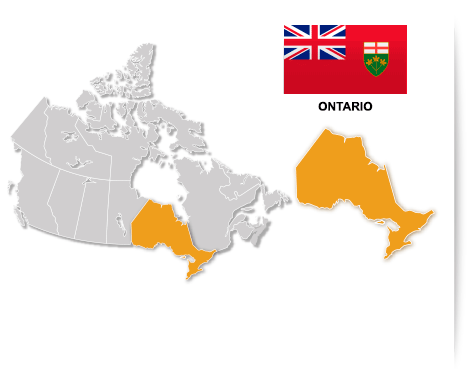

114,000 km of provincial natural gas transmission and distribution pipelines

100% of crude oil delivered by pipeline (2015)

216 million barrels/year - petroleum consumption (2015)

920 billion cubic feet/year - natural gas consumption (2015)
Provincial pipeline regulator
The Ontario Energy Board (OEB) oversees the province’s electricity and natural gas sectors through effective, fair and transparent regulation and in accordance with the objectives set out in its governing statutory framework.
The OEB has regulatory responsibility for pipeline systems located entirely within the province. Consequently, the OEB’s regulatory authority relates primarily to the province’s natural gas distribution system. Major inter-provincial transmission pipelines located in the province for natural gas (e.g. the TransCanada Mainline), crude oil (e.g. Enbridge Line 9), and petroleum products (e.g. TransNorthern Pipeline) are all regulated by the Canada Energy Regulator (formerly the National Energy Board).
Prevention
The OEB ensures that pipeline operators comply with the province’s Oil and Gas Pipeline Systems Code Adoption Document, which contains all national standards issued by the Canadian Standards Association that are applicable to Ontario.
The OEB’s approval for construction of new pipelines is conditional upon compliance with all related regulatory requirements including the design, operation, maintenance, safety, and integrity requirements under the province’s Technical Standards and Safety Authority (TSSA) mandate.
Pipeline operators in Ontario are required to have a Pipeline Integrity Management Program to ensure that pipeline companies have proper controls to mitigate safety risks. This includes in-line pipeline inspections, records of the pipeline history, operation manuals, and documentation required to develop and implement the integrity management program.
The TSSA audits oil transmission pipelines and natural gas transmission and distribution pipelines approximately every five years.
The regulator has a range of enforcement options to ensure compliance, including penalties under the Environmental Protection Act (EPA), suspension or loss of license, and prosecution.
Preparedness and response
Ontario requires that every pipeline operator notify the Ministry of the Environment, Conservation and Parks Spills Action Centre and any municipality within the boundaries of an affected area in the event of a spill, unless the incident meets a set of specified conditions (e.g. a spill of not more than 100 litres in areas restricted to the public, or not more than 25 litres in areas with public access, and product does not enter and is unlikely to enter a watercourse).
All pipeline operators must have world-leading contingency planning and emergency response programs. Companies must develop and implement plans to prevent or reduce the risk of, and remediate any adverse effects that may result from, spills of pollutants. For pipeline segments located in high-consequence areas, regulatory requirements intensify.
TSSA investigates incidents in Ontario as required by regulation (i.e. involving death, injuries, fire, explosion, or substantial damage), and releases a follow-up report. Operators are required to clean up and remediate the site; the Ministry of the Environment, Conservation and Parks verifies that this has been completed in an acceptable manner.
Liability and compensation
Ontario holds pipeline companies exclusively responsible for economic and environmental risks, including remediation.
Pipeline companies are required to provide financial assurance that demonstrates their capability to respond to leaks and spills under the EPA.
Quebec
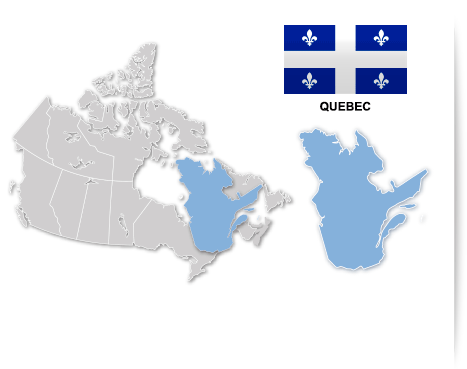

10 companies operating pipelines in Quebec

12,521 km provincial transmission and distribution pipelines

137 million barrels - crude oil consumption (2013)

271.8 billion cubic feet - natural gas consumption (2013)

$6.9 billion - value of crude oil imports (2015)
Provincial pipeline regulator
The following institutions, agencies, and ministries share responsibilities for pipeline regulation in Quebec:
Régie de l’énergie du Québec
Régie du bâtiment du Québec
Ministère de la Sécurité publique
Ministère du Développement durable, de l’Environnement et de la Lutte contre les changements climatiques
Ministère de la Justice
Ministère des Forêts, de la Faune et des Parcs
Société de l'assurance automobile du Québec
Commission de la santé et de la sécurité du travail
Commission de protection du territoire agricole du Québec
Sûreté du Québec
Bureau d’audiences publiques sur l’environnement
Info Excavation
Prevention
Companies operating pipelines in Quebec must comply with the technical design, construction, and operation standards of various recognized standards organizations, including the Canadian Standards Association, the American Petroleum Institute, the American Society of Mechanical Engineers, the American Society for Testing and Materials, Underwriters Laboratories of Canada, and the National Research Council Canada. The requirement to comply with these standards is generally stipulated in Acts and regulations. Pipelines may also be subject to the environmental impact assessment and review procedures provided for under the Environment Quality Act.
All natural gas pipelines must also submit their maintenance and leak detection programs to the Régie du bâtiment du Québec. A report on the findings of the maintenance and leak detection program and mitigation measures taken to address any problems must be submitted at the end of the same year.
Officials authorized to identify violations of the Environment Quality Act or its regulations include inspectors or auditors from the environmental control centre, wildlife protection officers, highway patrol officers, and provincial police officers.
The Ministère du Développement durable, de l’Environnement et de la Lutte contre les changements climatiques publishes several registers, including the following:
- Environmental emergency interventions
- Guilty pleas or convictions for offences under the Environment Quality Act or its regulations
- Monetary administrative penalties
Maximum penalties for violations of the Environment Quality Act (a fine of $1,000,000 and/or imprisonment of 18 months for an individual, or a fine of $6,000,000 for a company) apply in cases where the harm or damage caused by the offence to human health or the environment is sufficiently serious.
Preparedness and response
The Civil Protection Act imposes mandatory reporting of any risk-generating activities, including pipelines, to the local municipality where the source of the risk is located. A monitoring procedure, a procedure for warning authorities, and any other safety measures deemed necessary must be maintained by the company.
Regulation under the Environment Quality Act stipulates that any person who accidentally releases a hazardous material into the environment shall immediately stop the spill, inform the Ministère du Développement durable, de l’Environnement et de la Lutte contre les changements climatiques, recover the hazardous material, and remove all contaminated material that is not cleaned or treated on site. They may also be required to submit a remediation plan for the contaminated site for approval.
Through Urgence-Environnement, the provincial government provides 24/7 response province-wide to ensure that everything possible is done to minimize the impacts of environmental emergencies. Urgence-Environnement normally acts as a technical advisor, as municipalities in Quebec are responsible for emergency measures.
Urgence Environnment has the necessary specialized equipment to respond in the majority of emergency situations reported to it, including frequently used equipment in its regional branches and three mobile laboratories that can be immediately dispatched to the site of a major disaster.
In the event of a major environmental emergency, the provincial government response is coordinated by the Organisation de la sécurité civile du Québec.
Pipeline companies operating in Quebec regularly conduct, on a voluntary basis, emergency response exercises in the field. These exercises normally involve the deployment of emergency equipment and the participation of first-line responders. The government departments and agencies likely to be called upon in the situation attend as observers.
Liability and compensation
The Civil Code of Quebec contains provisions regarding unlimited civil liability, and duty to meet contractual obligations.
For this reason, over-the-counter forward contracts for hydrocarbon transportation, storage or distribution services usually require valid and current general liability insurance covering personal injury and damage to property and contractual liability, civil liability insurance as well as environmental liability insurance issued by recognized insurers.
Since March 31, 2007, the Quebec government's consolidated financial statements have included an environmental liability associated with the costs of contaminated site remediation. As of March 31, 2013, this liability was estimated at $3.2 billion.
New Brunswick
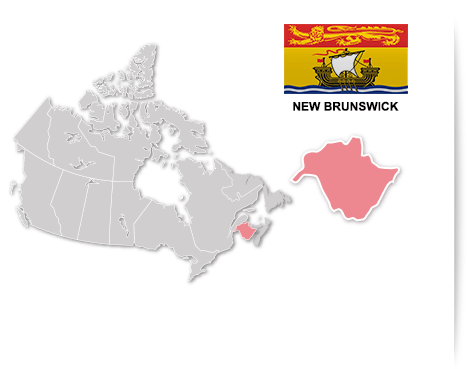

7 pipeline companies regulated

1,395 km of provincial pipelines

15.9 km of provincial crude oil pipelines

109.5 million barrels/year of crude oil transported by the Irving refinery (approx.)

6.3 billion cubic feet/year of natural gas transported by Enbridge Gas New Brunswick (2014)
Provincial pipeline regulator
New Brunswick Energy and Utilities Board
The New Brunswick Energy and Utilities Board (EUB) is an independent crown agency established to regulate the electricity, natural gas, pipeline, and motor carrier industries and to set maximum gasoline prices for the province.
Prevention
The EUB promotes safety to ensure that companies design, construct, operate, and abandon pipelines under its jurisdiction in a manner that provides for the safety of the public and company employees, as well as the protection of property and the environment. Pipelines must comply with New Brunswick’s Pipeline Act (PDF, 192 KB), Regulation, and applicable Canadian Standards Association standards. Guidance Notes are provided to companies to assist in understanding these regulatory requirements.
The types, frequency, and location of integrity testing of pipelines depend on the products being transmitted, the age of the pipeline, and issues identified during past audits. Companies must clearly outline the testing specific to each pipeline owned in their pipeline integrity manual. The EUB inspects and audits company records and any pipelines and associated facilities to ensure compliance with regulation and integrity management plans.
The EUB holds supervisory powers over regulated companies and may inquire into any matter and issue orders where it appears there was non-compliance or where it feels it is in the public interest to do so.
Preparedness and response
Pipeline companies in New Brunswick are required to have an emergency management program which must be comprehensive in nature with the main focus on protection of life, property, and the environment.
Companies are also required to have an emergency procedures manual, which must be submitted to the EUB. This manual must include, among other things:
- List or map of areas susceptible to potentially adverse environmental effects that may require special attention during an emergency
- Description of the types and locations of available emergency clothing and equipment
- Description of training program for incident response
- Identification of personnel to be deployed in the event of an incident
Companies are also required to conduct exercises to verify their capabilities to respond to incidents. The EUB participates in most training conducted by regulated pipeline companies. Companies are also required to be part of spill geographically-specific cooperatives, where those cooperatives exist.
The EUB must be notified immediately of any incidents, regardless of scale, and a detailed report must be filed with the EUB within 48 hours. Response standards vary and are specific to the location and type of pipeline. They are stated in the company’s emergency procedures manual.
First-responders, such as fire or police departments, oversee more serious incidents; with the EUB ensuring pipeline related evidence is secured and remaining available to first responders as needed. The EUB also has the power to conduct its own investigations, and can issue orders as necessary.
Liability and compensation
Under the Pipeline Act (PDF, 192 KB), the EUB may not issue a permit to construct or a license to operate a pipeline unless the applicant is insured by an insurance company licensed to do business in the province, and in an amount approved by the EUB. Comprehensive Pollution Legal Liability insurance is normally required.
The Pipeline Act is silent on whether companies are liable for costs associated with abandoned pipelines, so a condition is added to any EUB approval for pipeline abandonment stating that the EUB’s consent to abandonment does not relieve the applicant from any liability with respect to the abandoned pipeline.
Nova Scotia
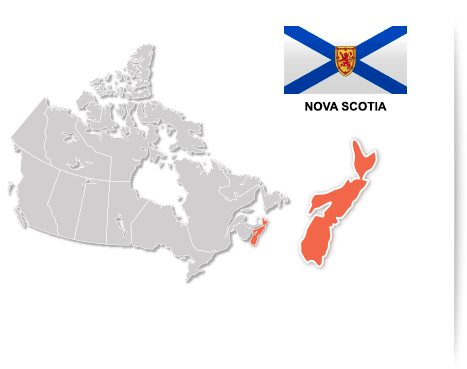

2 pipeline companies regulated

120 km of provincial pipelines

0 provincial crude oil pipelines

68.6 billion cubic feet/year of natural gas transported (2015)
Provincial pipeline regulator
Nova Scotia Utility and Review Board
The Nova Scotia Utility and Review Board (NSUARB) is an independent, quasi-judicial body which has both regulatory and adjudicative jurisdiction for pipelines in Nova Scotia.
Prevention
The NSUARB has control over the manner in which oil and gas pipelines in Nova Scotia are constructed, tested, maintained, and operated. It regulates pipelines in accordance with Nova Scotia's Pipeline Act, Regulation, and applicable Canadian Standards Association standards. No company may construct and operate a pipeline in the province without receiving the NSUARB’s approval.
Any proposed pipeline greater than 5 kilometres and any natural gas pipeline operating at greater than 3,450 kilopascals must register the project under the provincial Environment Act. Through an environmental assessment, all valued ecosystem components are identified, risks assessed, and mitigation measures discussed.
Projects are only allowed to proceed if they demonstrate that any significant adverse effects on the environment can be adequately mitigated. Two nesting seasons of baseline data are needed before pipeline construction can begin.
Companies are required to establish and implement a pipeline integrity management program, including monitoring and surveillance, for the protection of the pipeline and the public. Companies report on compliance and spill data semi-annually or annually, and all reports are public.
The NSUARB may direct any company, at that company’s own cost and expense, to test, inspect, or assess a pipeline. The NSUARB inspects and audits facilities, emergency manuals, exercise evaluations, integrity management programs, training manuals, emergency plans, and response manuals. The NSUARB may also issue orders and directives, including penalties up to $100,000 and imprisonment terms up to two years.
Preparedness and response
Pipeline operators are required to develop and regularly update an emergency plan, contingency plan, emergency procedures manual, and an emergency response training program. The plan must include provisions covering the accessibility and maintenance of equipment for emergency repair and response.
Companies are also required to conduct exercises to verify their capabilities to respond to incidents, with frequency depending on the facility. The NSUARB participates in these exercises through a third party representative.
In accordance with the Nova Scotia Environment Act (PDF, 194 KB), the NSUARB is to be notified immediately following the discovery of an incident relating the construction, operation, maintenance, deactivation, reactivation or abandonment of a pipeline. An incident includes the death of or serious injury to a person, a significant adverse effect on the environment and an unintended or uncontained release of hydrocarbons in excess of 1.5 cubic metres.
The NSUARB ensures that steps are taken to respond to a pipeline incident, and may enter the spill site and conduct operations as it considers necessary to repair the leak or break, to contain the escaped substance, and to prevent further escape. Rehabilitation of a contaminated site is required under the Environment Act.
Liability and compensation
Nova Scotia's Environment Act (PDF, 194 KB) embodies the polluter-pays principle. It is a term and condition of every license to construct or operate a pipeline that each licensee shall carry adequate personal injury, property damage, and third party liability insurance for losses suffered in the construction and operation of the pipeline, in such amounts as is determined by the NSUARB.
Offences under the Environment Act are liable to a fine between $1,000 and $1,000,000 or to imprisonment for up to two years, or both. If the NSUARB takes control of emergency response, it can direct by whom and to what extent the costs of such operations must be paid.
Contravention of the Pipeline Act is an offence and liable on summary conviction to a penalty of up to $100,000 or imprisonment for up to two years.
Disclaimer:
Users are reminded that this publication has no legislative sanction. It has been consolidated for convenience of reference only. Original Regulations should be consulted for all purposes of interpreting the law.
Page details
- Date modified: